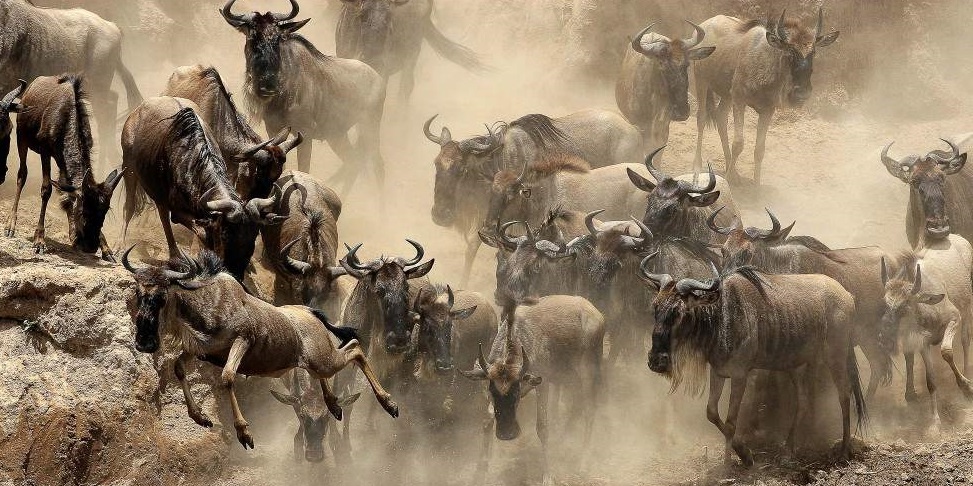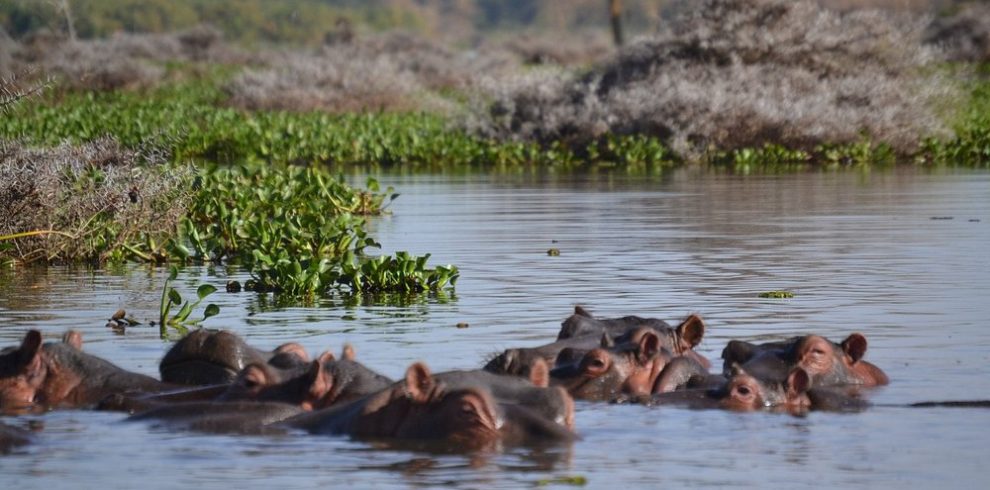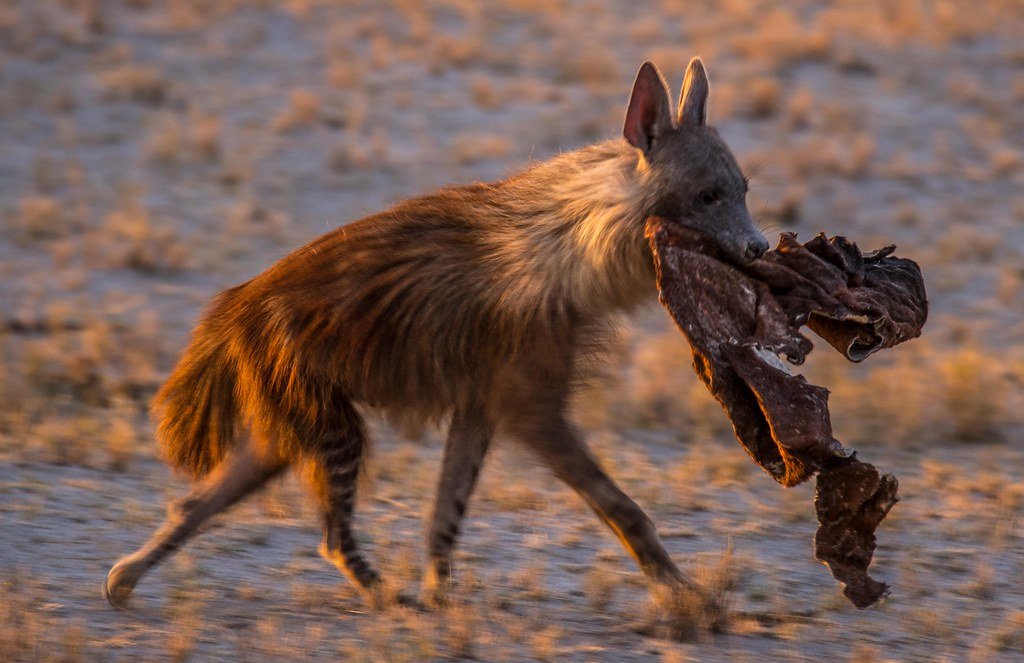
The Brown Hyena, a lesser-known but incredibly fascinating species, inhabits the arid landscapes of southern Africa. Often overshadowed by its more famous relatives, the spotted hyena, the Brown Hyena (Parahyaena brunnea) is a creature of mystery and intrigue. Its strange behavior, appearance, and ecological characteristics remain intriguing to scientists and such animal lovers. In this article, we will explore 5 fascinating facts about the Brown Hyena, uncovering the secrets of this elusive and often misunderstood animal.
1. The Brown Hyena Has a Unique Appearance
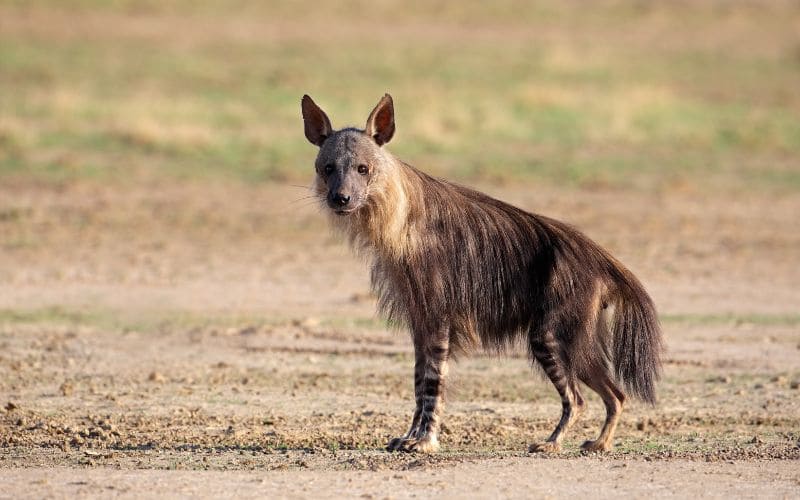
One of the most striking facts about the Brown Hyena is its distinctive physical appearance. Unlike the more well-known spotted hyena, the Brown Hyena has a much more shaggy and unkempt coat that gives it a scruffy, wild look. The fur is mostly dark brown or grayish-brown, some of them being lighter or reddish.
This shaggy coat helps the Brown Hyena blend in with the dry, sandy landscapes of southern Africa, providing it with camouflage in the deserts and scrublands it calls home. Another notable feature of the Brown Hyena is its long, dark mane that runs along its neck and shoulders, further contributing to its wild and untamed appearance. In relation to his cousins, the spotted and striped hyena, the hyena has a rather slender and elongated body and displays long legs and big and rounded ears giving him an almost fox-like appearance.
Another significant feature is its tail which is long and thick with fur, mostly kept near to the ground. The face of the Brown Hyena is somewhat more delicate than that of its more famous relatives, with a narrower snout and large, expressive eyes. Dark marks around the eye are also present on the face and may act as a means of identification or as a sign. This unique appearance sets the Brown Hyena apart from other hyena species and gives it a distinct place in the world of carnivores.
2. The Brown Hyena is a Scavenger, Not a Hunter
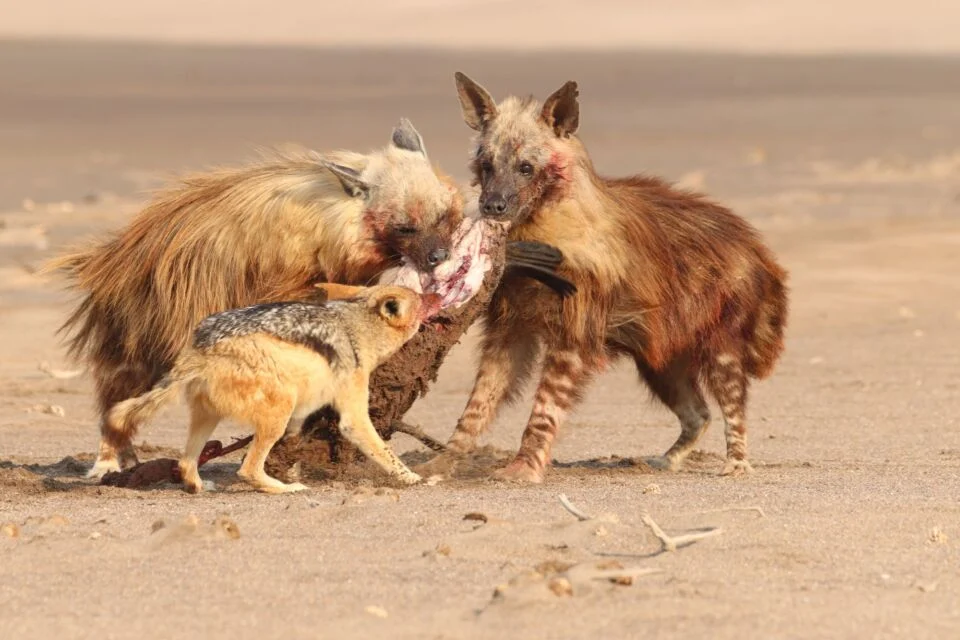
Another one of the most significant facts about the Brown Hyena is its role in the ecosystem as a scavenger rather than a hunter. While many people associate hyenas with hunting, the Brown Hyena primarily survives by scavenging the kills of other predators. It is very significant in the cleaning up of carcasses and also in assisting in population regulation of the herbivores through avoiding spread of diseases due to the decaying bodies.
Brown Hyenas have an extraordinary sense of smell, which they use to locate carcasses from long distances. Their sense of smell goes up to 10 kilometers (6 miles) to the odor of a deceased animal, which is essential to their survival when under the hostile conditions they live under. They do not kill bigger game such as lions or leopards but they will frequently eat the carcass of an animal killed by the bigger predators. This is particularly crucial in the dry parts of southern Africa where food may be scarce, and the resources needs to be well managed.
However, Brown Hyenas are not purely opportunistic scavengers. When presented with the opportunity they have also been known to feed on smaller animals including rodents, birds and reptiles. They can also prey upon the young or infirm individuals of the larger herbivores, but mostly their hunting is opportunistic as opposed to premeditated. While they are primarily scavengers, Brown Hyenas are also notorious for stealing kills from other predators, such as lions, cheetahs, or wild dogs.
Their large strong jaws and imposing nature means they are a formidable presence at a carcass, and it is known they can push smaller predators off of their food supplies given the opportunity. This form of aggression is not so frequent, but it demonstrates the ingenuity of the hyena when it comes to acquiring food in a rather competitive society.
3. Brown Hyenas Are Solitary and Mysterious
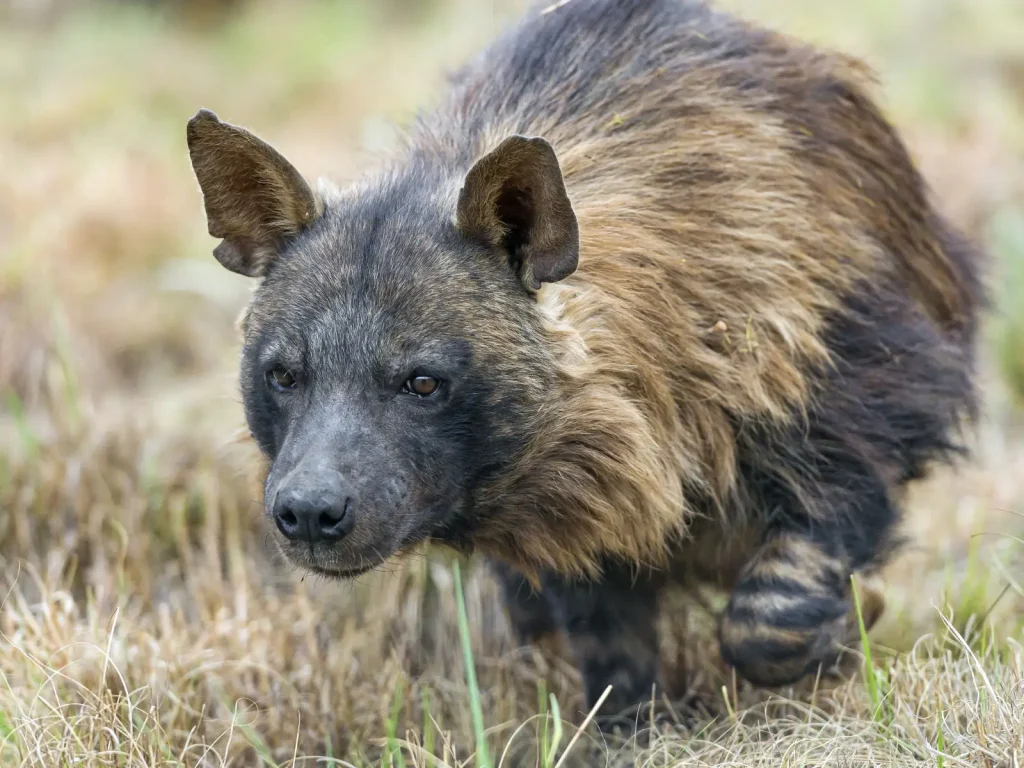
Unlike the highly social spotted hyena, which is famous for its complex clan structures, the Brown Hyena is primarily a solitary animal. This behavior is one of the most intriguing facts about the Brown Hyena and sets it apart from many other members of the hyena family. While Brown Hyenas do not form large social groups, they do sometimes share territories with other individuals of their kind, particularly in areas where food is abundant.
But these animals do not live in great friendly communities, as their cousins with spots. Brown Hyenas tend to have home ranges that can be quite large, sometimes covering up to 2,500 square kilometers (965 square miles) depending on the availability of food and water. Within their home range, Brown Hyenas will mark their territory using scent marking, which is an essential part of their solitary lifestyle.
They utilise urine and faeces to dig boundary marks as well as to converse with other hyenas who might be roaming around, their territory. Despite their solitary nature, Brown Hyenas are not entirely antisocial. They do sometime congregate to mate and can form tiny family units at breeding time. Nevertheless, even under such conditions they fail to exhibit the most cooperative behaviour observed in the spotted hyena that has been well known to have close-knit social groupings and intricate hierarchies.
The Brown Hyena’s solitary lifestyle means that it is often more difficult to observe in the wild, as it spends much of its time foraging alone, often at night. The Brown Hyena’s elusive and mysterious nature has led to it being regarded as one of the least studied and most enigmatic members of the hyena family. They are still the subjects of research, although because of nocturnal habits and affinity to remote, rugged locales, a lot of its behavior is still less well-known.
4. Brown Hyenas Have a Vital Ecological Role
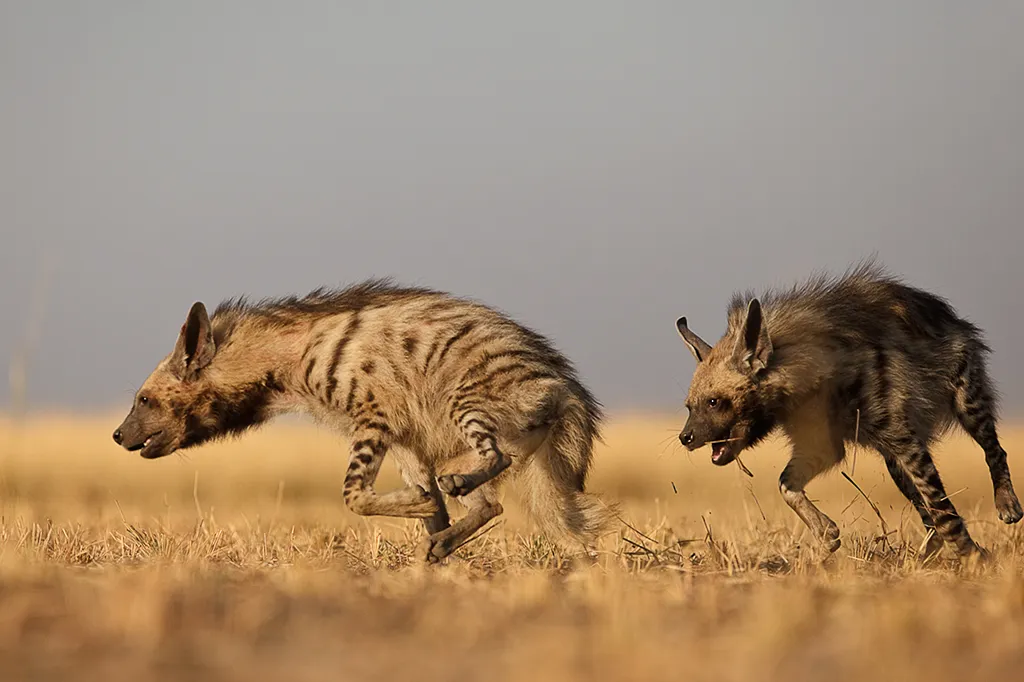
As scavengers, Brown Hyenas play a crucial ecological role in their habitats. Their eating habits aid in maintaining the cleanliness of the environments in which they live due to scavenging on the dead bodies and avoiding propagation of diseases. Unattended corpses of dead animals may end up breeding parasites and bacteria that prove destructive to other wildlife. By consuming these carcasses, Brown Hyenas help prevent the spread of such diseases and ensure the health of the ecosystem.
In addition to their scavenging habits, Brown Hyenas also help control populations of smaller animals, such as rodents and insects, by eating them when they are available. This aids in the general equilibrium of the food web in the sense that it avoids overpopulation of any species to overcome other animals in resources. The Brown Hyena’s ability to survive in harsh and arid environments also makes it an important indicator species.
They can live in diverse environments that are very harsh and unpredictable since they are very adaptive. The presence of Brown Hyenas in an area can be a sign of a healthy, functioning ecosystem that has the right balance of food, water, and shelter for a variety of species. This flexibility is vital in assisting scientists to conclude on the general health of their habitats. Additionally, Brown Hyenas help support the biodiversity of their environment.
As they feed on carrion and contribute to the decomposition of the remains of deceased animals, they form an environment full of nutrients which can be then useful to other species, including scavengers such as vultures, jackals, and some kinds of birds and insects.
5. The Brown Hyena is Endangered

Despite their important role in the ecosystem, Brown Hyenas are currently listed as Near Threatened by the International Union for Conservation of Nature (IUCN), with some populations facing significant risks. Habitat loss caused by human encroachment is one of the major threats towards their survival.
As human settlements expand, particularly in southern Africa, Brown Hyenas are losing their natural habitats and being forced into smaller, more fragmented territories. This complicates their survival by making it difficult to locate both food and mates hence their population decreases. In addition to habitat loss, Brown Hyenas are also at risk from human-wildlife conflict. Farmers and ranchers usually see hyenas as a threat to livestock, especially where there is an overlap between livestock and hyenas.
As a result, some farmers may resort to trapping, poisoning, or shooting Brown Hyenas in an attempt to protect their animals. While this behavior is not as widespread as it is with other predators, it still contributes to the decline of Brown Hyena populations in certain areas. Poaching for their pelts is another threat to the Brown Hyena, although this is less of a concern compared to other carnivores like leopards. However, hunting of these animals is still a considered illegal practice in some areas within their distribution, which further increases the threats to survival.
Conclusion
The Brown Hyena is one of the most fascinating and enigmatic creatures of southern Africa. That is why it needs to be more popular and appreciated with its unusual looks, lonesomeness, and significant ecological role. By playing a crucial role in maintaining ecosystem balance, preventing the spread of disease, and controlling smaller animal populations, the Brown Hyena is an essential part of its habitat.
Nevertheless, the Yeah! etwa qualify as a species under threat as much like many other species there are the threats associated with habitat loss, the human-wildlife conflict, and poaching. This intriguing species should be preserved so that it does not become extinct by implementing conservation measures. Protecting their habitats, reducing human-wildlife conflict, and promoting awareness of their ecological value are key steps toward preserving the Brown Hyena for future generations. The facts about the Brown Hyena reveal an animal that is not only fascinating but also vital to the health of its ecosystem, and we must work together to safeguard its future.

